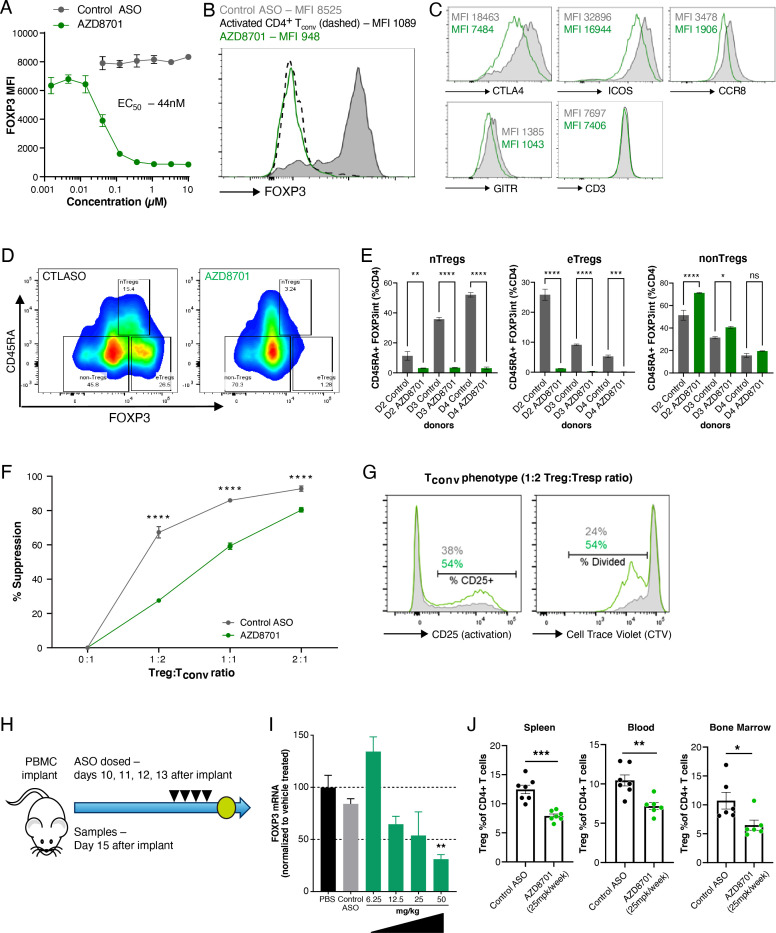Figure 1.
AZD8701 is a highly potent clinical candidate ASO targeting human FOXP3. (A–C) Primary human Tregs were isolated from human PBMCs and cultured with AZD8701 or control ASO in duplicates for a total of 9 days, in the presence of Dynabeads human T-activated CD3/CD28 for the final 2 days of culture. (A) Line graph and (B) histogram show FOXP3 protein abundance in cultured Tregs as measured by flow cytometry. Histogram shows representative data for Tregs cultured with 1 µM ASO. (C) Histograms show the abundance of indicated proteins from a representative treatment with 1 µM AZD8701. (D–E) Contour plot and quantification of FOXP3 knockdown in human PBMC nTRegs and eTRegs with AZD8701 by flow cytometry. Data shown for three healthy donors. (F–G) iTregs were differentiated and cultured in the presence of ASOs in quadruplicates. Data represent ≥3 independent experiments and a total of ≥6 independent donors. (F) Line graph shows ability of iTregs to inhibit proliferation of effector cells in an in vitro suppression assay. (G) Histograms show representative CD25 or CellTrace Violet (CTV) staining on effector cells cultured at a 1:2 iTreg:Teffector ratio. (H) NSG mice were humanized by the infusion of human PBMC and treated systemically for four consecutive days with different AZD8701 doses. (I) FOXP3 messenger RNA expression was quantified by RT-qPCR. N=4 per group. (J) FOXP3 protein levels were quantified by flow cytometry in spleen, blood and bone marrow of humanized mice treated as in (F). N=7 per group. Data in figure is representative of ≥2 independent experiments. Error bars are ±SEM *, p≤0.05; **, p≤0.01; ***, p≤0.001; ****, p≤0.0001 by one-way analysis of variance (ANOVA) with Dunnett’s post-test for E and J and two-way ANOVA with Dunnett’s post-test for F. Differences are calculated relative to control ASO (E, F and J) or saline (I). ASOs, antisense oligonucleotides; eTreg, effector Tregs; iTreg, inducible Tregs; nTreg, natural Tregs; PBS, phosphate buffered saline; Treg, regulatory T cells.

